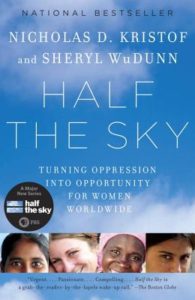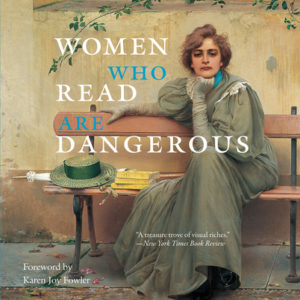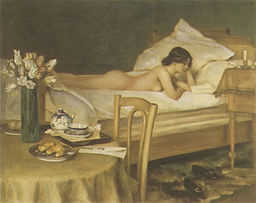March 8 is International Women’s Day, a date that garners a lot of attention on the global stage. In some countries, it is even a national holiday. Ironically, while a fine celebration in name, the honoring is more theory and show than actual practice, especially in places where women are subjected to numerous hardships and inequities.
 A couple of years ago, I read a New York Times column that prompted me to flash back to “Cutting for Stone,” by Abraham Verghese, a hypnotic work that I could not put down until I had turned the last page. The book’s characters plumb the range of the human condition: love, betrayal, forgiveness, cowardliness, bravery, and redemption. Its plot spans several continents and entwines birth, death, relationships, rivalries, ambition, medicine, politics and culture.
A couple of years ago, I read a New York Times column that prompted me to flash back to “Cutting for Stone,” by Abraham Verghese, a hypnotic work that I could not put down until I had turned the last page. The book’s characters plumb the range of the human condition: love, betrayal, forgiveness, cowardliness, bravery, and redemption. Its plot spans several continents and entwines birth, death, relationships, rivalries, ambition, medicine, politics and culture.
The news column that had sparked my memory of the book was written by Op-Ed columnist Nicholas Kristof. The topic was about obstetric fistulas, an injury that plagues over two million women worldwide, especially in countries where young girls endure prolonged labor and traumatic childbirth. It is an ugly scenario: the woman leaks an unchecked flow of urine, feces or both, through her vagina―the stench often forces her to become a social outcast.
Reading Kristof’s column, I reflected back to “Cutting for Stone,” whose subplots include important international women’s issues, like female genital circumcision and obstetric fistulas. A passage in this story-within-the-story eloquently describes the reality of the latter:
An unspeakable scent of decay, putrefaction, and something else for which the words remain to be invented reached my nostrils. I saw no point in holding my breath or pinching my nose because the foulness invaded instantly, coloring our insides like a drop if India ink in a cup of water. In the way that children understand their own, we knew her to be innocent of her terrible overpowering odor. It was of her, but it was not hers. Worse than the odor (since she must have lived with it for more than a few days) was to see in her face the knowledge of how it repulsed and revolted others…”
While a horrific condition, obstetric fistulas can often be repaired if the woman has access to the necessary surgical resources. More importantly, it is a condition that can be prevented.
 On the heels of that, I read “Half the Sky: Turning Oppression into Opportunity for Women Worldwide,” by Pulitzer Prize award-winners Kristof and Sheryl WuDunn. This non-fiction tackles tough issues―sex trafficking and forced prostitution, violence against women including honor killings and mass rape, and maternal injuries like obstetric fistulas and childbirth-related death. These are topics from which many people instantly recoil. As easy as it is to wish that they don’t exist―they do―and the book helps us to grapple with that reality. It is filled with individual stories but avoids the sensationalism of charity porn. It includes credible data, but I didn’t feel numbed by the numbers. And it skips finger-pointing and hand-wringing but instead offers objective options and opportunities for how we can help shift the paradigm.
On the heels of that, I read “Half the Sky: Turning Oppression into Opportunity for Women Worldwide,” by Pulitzer Prize award-winners Kristof and Sheryl WuDunn. This non-fiction tackles tough issues―sex trafficking and forced prostitution, violence against women including honor killings and mass rape, and maternal injuries like obstetric fistulas and childbirth-related death. These are topics from which many people instantly recoil. As easy as it is to wish that they don’t exist―they do―and the book helps us to grapple with that reality. It is filled with individual stories but avoids the sensationalism of charity porn. It includes credible data, but I didn’t feel numbed by the numbers. And it skips finger-pointing and hand-wringing but instead offers objective options and opportunities for how we can help shift the paradigm.
I believe that anyone who cares about the future of women, and society, should read this book. Over-and-over, it emphasizes education as a crucial component to help elevate women’s rights and alleviate abuse: education for women and education about critical issues for both sexes.
Education takes on many forms and has many audiences. One of my favorite Mark Twain quotes applies to men and women: “The man who does not read has no advantage over the man who cannot read.” Literacy and literature are foundational building blocks to education. And this brings me to, “Women Who READ Are Dangerous.”
 Friends gave me a gift of this magnificent coffee-table book. Along with page-after-page of artwork of women engaged in the pleasure and passion of reading (the art is an education unto itself), this wonderfully-named book is full of insights such as:
Friends gave me a gift of this magnificent coffee-table book. Along with page-after-page of artwork of women engaged in the pleasure and passion of reading (the art is an education unto itself), this wonderfully-named book is full of insights such as:
“With the ability to read, however, there developed new patterns of private behavior that were to threaten the legitimacy of both the Church and secular authorities on a permanent basis. Women who learned to read at that time were considered dangerous. For the woman who reads acquires a space to which she and no one else has access, and together with this she develops an independent sense of self-esteem: furthermore, she creates her own view of the world that does not necessarily correspond with that conveyed by tradition, or with that of men. All this does not yet signify the liberation of women from patriarchal guardianship, but it does push open the door that leads to freedom.”
Below is a short book list of favorites that I have enjoyed along with some recommendations from readers. This list could go on for pages, but I hope that you will share with me your other favorites by, and about, powerful women, women’s rights and women’s issues!
Read…and Be Dangerous!

“Birth Control in America: The Career of Margaret Sanger” (David M. Kennedy) • “Cleopatra the Great: The Woman Behind the Legend” (Joann Fletcher) • “Eleanor of Aquitaine” (Marion Meade) • “Elizabeth Cady Stanton and Susan B. Anthony: A Friendship That Changed the World” (Penny Colman) • “I Am Malala: The Girl Who Stood Up for Education and Was Shot by the Taliban” (Malala Yousafzai) • “Madame Curie: A Biography” (Eve Curie) • “My Beloved World” (Sonia Sotomayor) • “Reading Lolita in Tehran: A Memoir in Books” (Azar Nafisi) • “The Favored Daughter: One Woman’s Fight to Lead Afghanistan into the Future” (Fawzia Koofi and Nadene Ghouri) • “The Feminine Mystique” (Betty Friedan) • “The Secret Piano: From Mao’s Labor Camps to Bach’s Goldberg Variations” (Zhu Xiao-Mei) • “Sojourner Truth’s America” (Margaret Washington) • “The Woman Behind the New Deal: The Life and Legacy of Frances Perkins, Social Security, Unemployment Insurance” (Kirstin Downey)